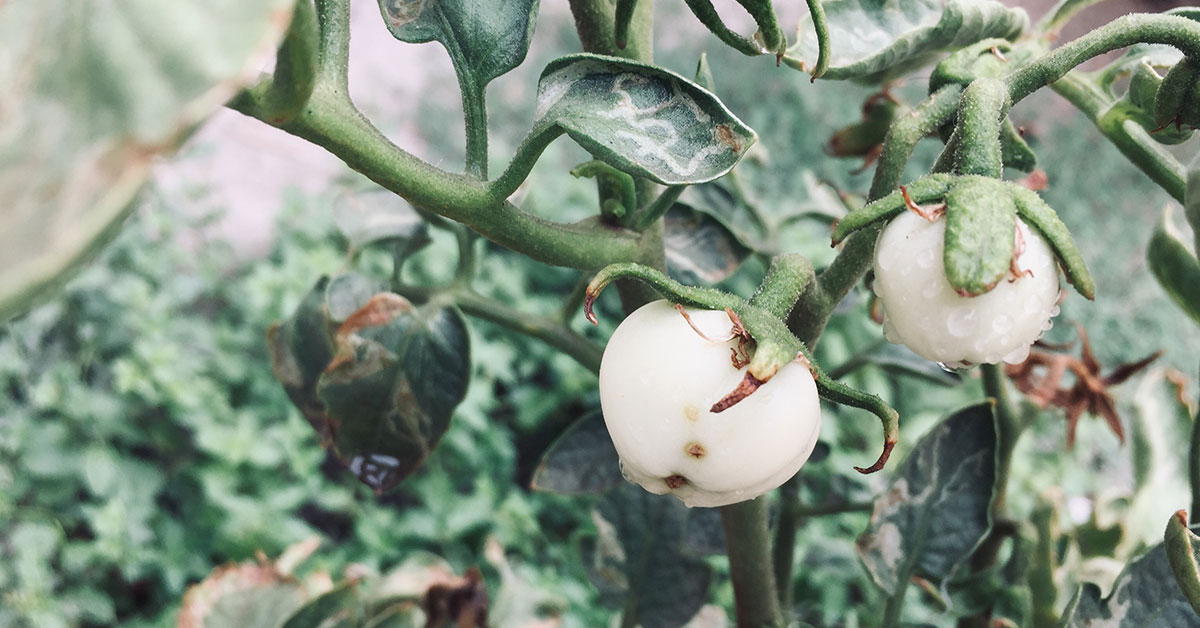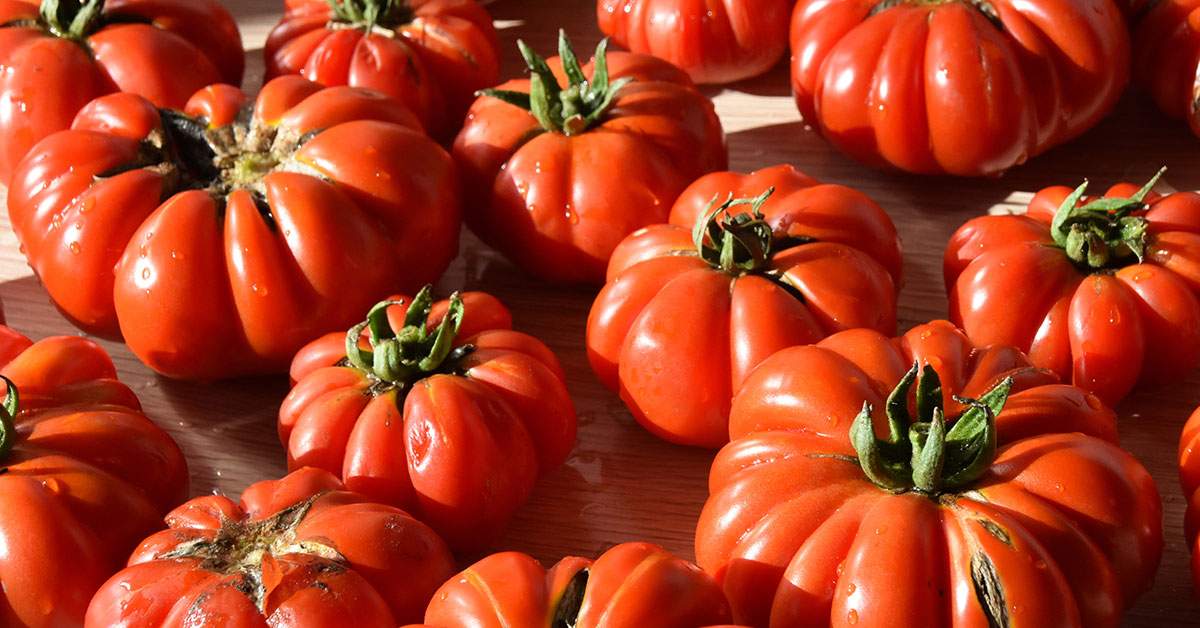The Great White tomato is a unique and delicious variety of tomato that has been gaining popularity in recent years. This tomato is known for its creamy white color and mild, sweet flavor. Unlike traditional red tomatoes, the Great White tomato is not as well-known or widely available, but it is definitely worth seeking out for its exceptional taste and striking appearance. In this blog post, we’ll explore all there is to know about the Great White tomato, from its origins to how to grow and use it in your cooking.
What is a Great White tomato?
Great White tomatoes are a unique and delicious variety of tomato that are becoming increasingly popular among gardeners and food enthusiasts. These tomatoes are known for their large size, creamy white color, and sweet, tangy flavor.
Unlike traditional red tomatoes, Great White tomatoes have a low acidity level, which makes them a great option for those who are sensitive to acidic foods. They also have a slightly thicker skin and meatier texture, which makes them ideal for slicing and adding to sandwiches or salads.
Great White tomatoes are typically grown in warmer climates, and they require full sun and plenty of water to thrive. They can be grown in a variety of soil types, but they prefer well-draining soil that is rich in organic matter.
One of the great things about Great White tomatoes is that they are relatively easy to grow, even for beginner gardeners. They require minimal maintenance and can be grown in containers or in the ground. With a little bit of care and attention, you can enjoy a bountiful harvest of these delicious tomatoes throughout the growing season.
How to start Great White tomatoes from seed
Starting tomatoes from seed is a cost-effective and rewarding way to grow your own tomato plants. To begin, choose the tomato varieties that suit your preferences and growing conditions.
Fill seed trays or pots with a lightweight and well-draining seed starting mix, plant the seeds at the recommended depth, and provide adequate moisture and warmth for germination.
Once the seedlings have developed their second set of true leaves, they can be transplanted into larger containers or individual pots. Gradually acclimate the seedlings to outdoor conditions before transplanting them into the garden.
By following these basic steps, you can successfully start tomatoes from seed and enjoy a thriving crop of homegrown tomatoes.
Additional Resource: Our comprehensive guide to starting tomatoes from seed
Growing & care
Transplanting and caring for tomatoes outdoors involves a few essential steps. First, choose a sunny location with well-drained soil. Prior to transplanting, harden off the seedlings by gradually exposing them to outdoor conditions.
Dig a hole slightly larger than the root ball of each seedling and plant them, burying the stem up to the first set of leaves. Water the seedlings thoroughly after transplanting. Provide consistent watering, aiming for 1-2 inches of water per week.
Stake or cage the plants for support and prune indeterminate varieties by removing suckers. Monitor for pests and diseases, taking prompt action if necessary. By following these steps, you’ll set your tomato plants up for healthy growth and a fruitful harvest.
Additional Resource: How to transplant and care for tomatoes outdoors
Common Great White tomato pests and diseases
Tomatoes are susceptible to various pests and diseases that can affect their health and productivity. Some common tomato pests include aphids, tomato hornworms, whiteflies, and cutworms. These pests can cause damage to leaves, stems, and fruit, leading to reduced plant vigor and yield.
Additionally, tomato plants can be affected by diseases such as early blight, late blight, fusarium wilt, and verticillium wilt. These diseases can cause leaf discoloration, wilting, and fruit rot. Proper identification and timely intervention are crucial to effectively manage these pests and diseases and ensure the successful growth of tomato plants.
Additional Resource: Comprehensive list of tomato diseases and pests and how to fix them
Common problems
Great White tomatoes are a unique variety of tomato that produce large, meaty fruits with a creamy white color. While they are relatively easy to grow, like any plant, they can be susceptible to certain problems. In this blog section, we will explore some common issues that you may face when growing Great White tomatoes.
- Blossom End Rot: Blossom end rot is a common problem that affects many different types of tomatoes, including Great White tomatoes. This condition is caused by a calcium deficiency and is characterized by a dark, sunken spot on the bottom of the fruit. To prevent blossom end rot, make sure that your plants are receiving enough water and nutrients. You can also add calcium to the soil by using a fertilizer specifically designed for tomatoes.
- Fusarium Wilt: Fusarium wilt is a fungal disease that can cause your Great White tomato plants to wilt and die. This disease is spread through the soil and can be difficult to control once it has infected your plants. To prevent Fusarium wilt, make sure that you are planting your tomatoes in well-draining soil and avoid overwatering. You can also use a fungicide to help control the spread of the disease.
- Tomato Hornworms: Tomato hornworms are large, green caterpillars that can cause significant damage to your Great White tomato plants. These pests feed on the leaves and fruits of the plant and can quickly strip it of its foliage. To prevent tomato hornworms, inspect your plants regularly and remove any caterpillars that you find by hand. You can also use insecticides to control the population of these pests.
- Cracking: Cracking is a common problem that affects many different types of tomatoes, including Great White tomatoes. This condition is caused by fluctuations in moisture levels and can cause the fruits to split and become unsightly. To prevent cracking, make sure that your plants are receiving consistent moisture levels. You can also use mulch to help retain moisture and provide a more consistent growing environment for your plants.
By understanding these common problems and taking steps to prevent them, you can help ensure that your Great White tomato plants thrive and produce a bountiful harvest. With a little bit of care and attention, you can enjoy the unique flavor and texture of these delicious tomatoes all season long.
Uses
Great White tomatoes are highly versatile and can be used in a variety of ways. These tomatoes are typically used for making fresh salads, sandwiches, and salsas. They are also great for cooking and can be used in soups, stews, and sauces.
Additionally, Great White tomatoes are perfect for canning and preserving, as they have a high acidity level and hold their shape well. Due to their mild flavor and low acidity, Great White tomatoes are an excellent choice for those who prefer a sweeter tomato taste.
Overall, the Great White tomato is a great addition to any kitchen and can be used in countless recipes for a delicious and healthy meal.













